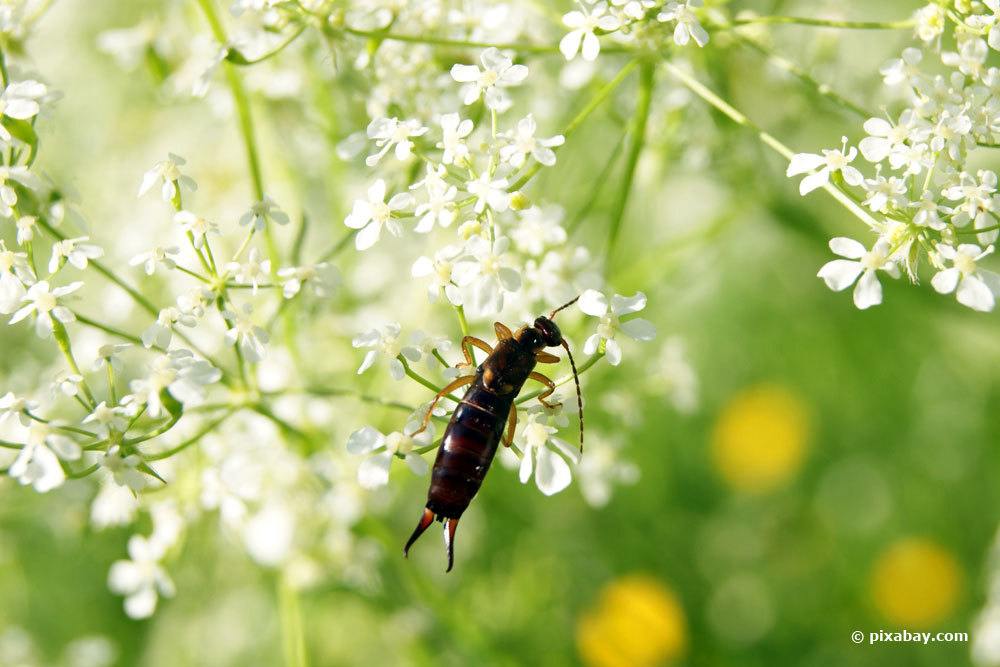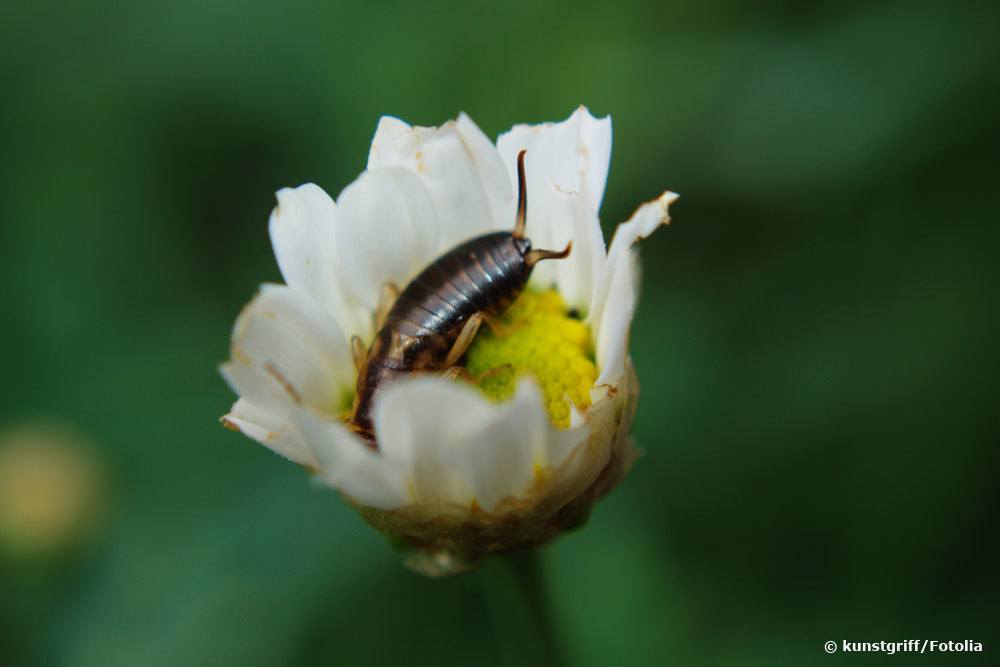Earwigs are not dangerous or poisonous to humans. Despite their somewhat menacing appearance, they are generally harmless insects. Earwigs are characterized by their elongated bodies and pincer-like cerci at the rear, which they use for defense and mating. While they may use their pincers in self-defense, they do not pose a threat to people.
Contents
Here are some key points to keep in mind about earwigs:
- No Poison: Earwigs do not possess venom or poison, and their pincers are not capable of causing harm to humans. The pincers are primarily used for capturing prey and protecting themselves from predators.
- Omnivores: Earwigs are omnivorous, and their diet typically consists of a variety of plant material, decaying organic matter, and small insects. They are often beneficial in gardens because they help control other insect populations.
- Indoor Presence: While earwigs are more commonly found outdoors in gardens and other damp areas, they can occasionally enter homes seeking shelter or food. Finding an earwig indoors is not cause for concern, as they are not harmful to humans or pets.
- Lifecycle: Earwigs go through a series of molts as they grow, shedding their exoskeletons. These insects are also known for their maternal care, with the female protecting and caring for her eggs and nymphs.
In summary, earwigs are not dangerous or poisonous to humans. They are generally considered harmless and, in many cases, can be beneficial in controlling other insect populations in outdoor environments. If you encounter them indoors, it’s usually a temporary situation, and they can be safely removed without the need for extreme measures.
The small brown beetles have moved the interest of mankind for centuries. Earwigs (Dermaptera) look a bit dangerous with their small pincers on the abdomen. Many people, especially children encounter the earwig rather fearfully when it crosses their path. Mostly they are found in the wild during the night. Occasionally, some specimens may also stray into the house. Often then the question arises whether earwigs are dangerous or poisonous?
Earwigs
Earwigs are also commonly known as earwigs. There are about 1,700 different species worldwide. Of these, only 30 live in Europe. In Europe, the “common earwig” (Forficula auricularia) is the most common. The small insects can reach a size between 12 and 17 millimeters, depending on their sex, and are reddish-brown to black in color. Their body is divided into three limbs:
- Head with sharp mouthparts, two antennae and eyes.
- Chest with wings
- abdomen with two pincers (ceri) and yellow legs
Note: Earwigs belong to the flying insects. However, only a few species can actually fly. Depending on the species, the wings are either fully developed or retracted to the point of being unable to fly.
In general, most forewings are strongly recurved and the hindwings are folded under the chitinous carapace and not visible. The graspers on the abdomen are curved to different degrees in males and females. They are used for defense against attackers and seizure of prey. In addition, they also provide good assistance during mating to hold the partner. Flying species can open their hind wings with the help of the pincers.

Rarely visible during the day
As a rule, the small insects are extremely nocturnal. During the day they are hardly visible. Unless they have been startled into their hiding places. Earwigs love a sheltered, narrow and slightly moist place. Here they feel especially comfortable and in spring the females also lay eggs in this place and then in autumn already the young. Preferred hiding places are
- piles of brushwood and leaves
- small cracks in branches
- gaps between tree and bark
- cavities under stones but also
- hollow peach pits
Note: Earwigs are also very family-oriented. After the egg-laying, a careful brood care takes place, as it is known in the realm of the insects only with the honey bees. Without this brood care, the eggs could not survive.
Are earwigs dangerous?
For centuries, there has been a legend surrounding these small insects. For this reason, earwigs were also considered very dangerous and sometimes poisonous to humans and animals. According to tradition, people believed that the small beetles entered the ear canal of sleeping people during the night and destroyed the eardrum with their pincers and laid their eggs there. Of course, this is just a superstition, because earwigs simply do not have the power to do this. On the contrary, they are completely harmless to humans and even pets and are far from poisonous. Even a small bite from the earwig is completely harmless, not dangerous or poisonous and does not even really hurt. Merely the insects defend themselves in such a way, if they feel harassed.
Note: Earwigs can shoot their secretions up to 10 cm away from their enemies. However, there is no health risk. It is not poisonous.
However, it is a fact that they were used as medicine in the Middle Ages. For this purpose it was necessary to grind the dead insects to a powder. It was then used for earache, deafness and hearing loss. Well, the success is certainly questionable.
Useful garden helpers
Among organic farmers and, of course, amateur gardeners, earwigs are definitely considered useful garden helpers. Their favorite food consists mainly of aphids, the small, light green pests on the underside of leaves or even on flowers and flower buds of various plants, such as roses. Once a plant is infested with them, they literally suck out its sap. Without control, major damage can occur. Now here, in addition to cockchafer, earwigs can be a natural control method. At dusk, the small insects then go hunting. But not only aphids belong to their preferred food, but also
- eggs of the codling moth
- Mites
- Spider moths
- Fungal webs
- algae
- Powdery mildew fungi
However, it should also be noted that dermaptera can cause damage in fruit and grape crops. Especially in warm and dry years, when they proliferate strongly, soft-skinned fruits such as
- cherries
- peaches
- grapes and
- plums
- may be on their menu. Very often they are also found in pitted fruits, for example apples. However, these fruits are usually rotten or pre-damaged. Earwigs cannot penetrate hard fruit shells on their own. They usually use the tunnels of codling moth caterpillars.
Since earwigs feed partly on organic waste, fungi and algae, they are also involved in humus formation and likewise the release of nutrients in the soil. At the same time, they in turn serve as food for birds, hedgehogs and shrews.
There is also the possibility, especially in dry years or if there are not enough aphids, that the earwigs feed on carrion or dead plant parts. They then also gnaw on healthy leaves and flowers to meet their water needs. If frayed, gnawed leaves then appear, it is usually the Dermaptera at work.
They can also cause damage to grain stores, grapes, peaches furthermore to ornamental plants such as clematis, trumpet flowers and dahlias, since here no plant protection products are permitted. However, it occurs quite rarely.
In the garden, after all, earwigs predominantly prove more useful than dangerous and poisonous.

Note: Normally earwigs feed on plants and animals. However, the sand earwig (Labidura riparia) on the Baltic Sea coast is a pure carnivore, measuring 26 mm in length.
Earwigs as pest controllers
Now that earwigs have turned out to be useful pest controllers, no control should be carried out in the garden. On the contrary, it is useful to create suitable habitats, in other words, appropriate nesting and resting places. In this way it will be possible to attract the beetles and make them stay. It is very easy to build your own shelter for this purpose, without any great expense or manual skill. Ideal for this proves to be a flower pot made of clay filled with straw.
- piece of string knotted with crossbar
- pull from the bottom through the hole of an upside down flower pot
- Crossbar and string ensures suspension of the pot
- fill the pot with straw or wood wool
- dust with a handful of soil
- firmly insert a piece of rabbit wire
- wire must protrude 3 cm above pot rim
- fix everything with binding wire
- the inside of the pot should not get wet (rain)
- simply glue clay shard on upper hole
- place pot sideways near typical overwintering quarters
- recommended piles of brushwood and leaves
- best time: early spring
- opening must be accessible
- take pot carefully in the middle of June
- place at destination
- good place hanging in fruit trees
- with opening downwards
Tip: It is important that the pot is always in contact with the tree trunk or thicker branches at the top and also at the bottom. This allows earwigs to reach and leave their shelter completely unhindered and without detours.
Fighting the pests
Normally, earwigs should not be controlled in the garden, as they prove to be very useful. Sometimes, however, they can become a major nuisance, especially in dry and warm summers. However, the word plague is not really applicable with two populations in a year.
In the kitchen garden, earwigs can cause a lot of damage if the food supply is low. In addition, they are also not really desirable on balconies and terraces in masses. Nevertheless, they should not be fought in this sense, but if possible relocated to another place. For this purpose it is necessary to lure the insects out of their hiding place. The above mentioned flower pot filled with straw is helpful. This is simply placed with the upper side down in the bed, hung in the fruit tree or on the balcony and terrace near the ground. The animals will gladly accept this dwelling as their new home. Relocation is then possible without any problems.
Sometimes it can also happen that isolated specimens stray into the house. Here, too, relocation is advisable. Earwigs love damp places. A piece of damp paper or cloth can be placed in the corner of a room to attract them. It will not take long and the animals have gathered there. A transfer into the open air is then quickly done.
To prevent earwigs from entering the house in the first place, the use of fly screens can be helpful. Light can also help. The little bugs love dark places. So you can simply turn on lights or mount a light source in the affected areas.


